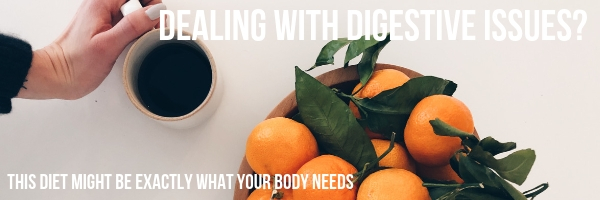How to Improve Your Digestive Health With Low FODMAP Diet
Dealing with Digestive Issues?
This diet might be exactly what your body needs.
If digestive problems are unfortunately your thing, you probably know what it’s like to find yourself bloated and squeezing into pants that constantly feel like they need to be unbuttoned, living in oversized shirts, rushing to the bathroom constantly (or not at all!), and sometimes, even curled up in a ball on the floor in pain. The most frustrating part? Chances are you aren’t even really sure why. If this sounds like you (or someone you know and love!), then this diet could be life-changing.
Australian researchers have discovered the answers that irritable bowel sufferers have been searching for, and it’s called the low FODMAP diet. The low FODMAP diet helps expose the foods that cause irritable bowel symptoms and will lead you on the path toward purposeful eating so that you (and your gut) feel better. If you struggle with abdominal pain, cramping, bloating, diarrhea, gas, constipation, indigestion,
or nausea, this diet might be exactly what your body needs. Imagine finally figuring it all out and restoring your digestive system once and for all!
You’re probably wondering, what’s a FODMAP? And, how does this diet work? FODMAP stands for Fermentable Oligosaccharides, Disaccharides, Monosaccharides, and Polyols. As far as how
it works — University-based researchers in Australia discovered that certain carbohydrates ferment faster in the digestive tract than others. These fast fermenting foods are likely to cause symptoms in people who deal with irritable bowel syndrome and other disorders like inflammatory bowel disease, exercise-related digestive discomfort, colic, and even fibromyalgia.
Foods (like garlic, onions, ice cream, wheat bread, apples, cauliflower, cherries) that are known to be highly fermentable (or high FODMAP) can cause “irritable bowel” syndrome sufferers to feel awful, but by lowering the overall FODMAP intake, your gut is spared the irritation. Here’s
how it works:
ELIMINATION PHASE: To get started, I recommend focusing on portioning and lowering your overall FODMAP load. This first phase of the diet, known as the elimination phase, is integral to getting your gut (and your whole body) feeling fabulous. If you’re unsure about how to begin,
my low FODMAP Elimination Phase Meal Plan is a great place to start.
CHALLENGE PHASE: Following the elimination phase, we begin to systematically challenge
higher FODMAP groups individually and in a quantifiable way to determine which ones are
causing symptoms.
REINTRODUCTION PHASE: This is the third and final phase of the FODMAP diet when you
reintroduce combinations of foods. Once you get to this point, you’ll continue with an
individualized and modified version of the low FODMAP diet that will work for you, for life!
So what if you did go low FODMAP? What if you changed your meals and it changed your life? The only thing you have to lose is the pain, bad bathroom experiences, and an unpredictable digestive system. It’s scary to think about jumping in (and sticking with it), but I’m challenging you to think about replacing all the thoughts of doubt you might have about giving up certain foods with the determination to get better and feel fabulous.
I want you to know that you DON’T have to do this alone, and you shouldn’t. I’m here to help guide you through each phase.
If you’re interested in getting started but still unsure, my FREE Starter Kit is a great place to check it out. Or, if you’re ready to take the plunge and get back to feeling like YOU, then my new book, The Cool Girl’s Guide to the FODMAP Diet: Everything youneed to get savvy about (and beat!) digestive issues — for life, might be exactly what you need to make healthy happen (please note: you can also find the book on Amazon, Barnes and
Noble, and other retailers).

Don’t FODMAP alone! You can connect with me on social media like Instagram and Facebook or join the FODMAP support group. Healthy doesn’t have to be hard. Change Your Meals, Change Your Life — You CAN do this.



















How do I get the starter kit? My husband suffers everyday. Terrible terrible discomfort. Please help.